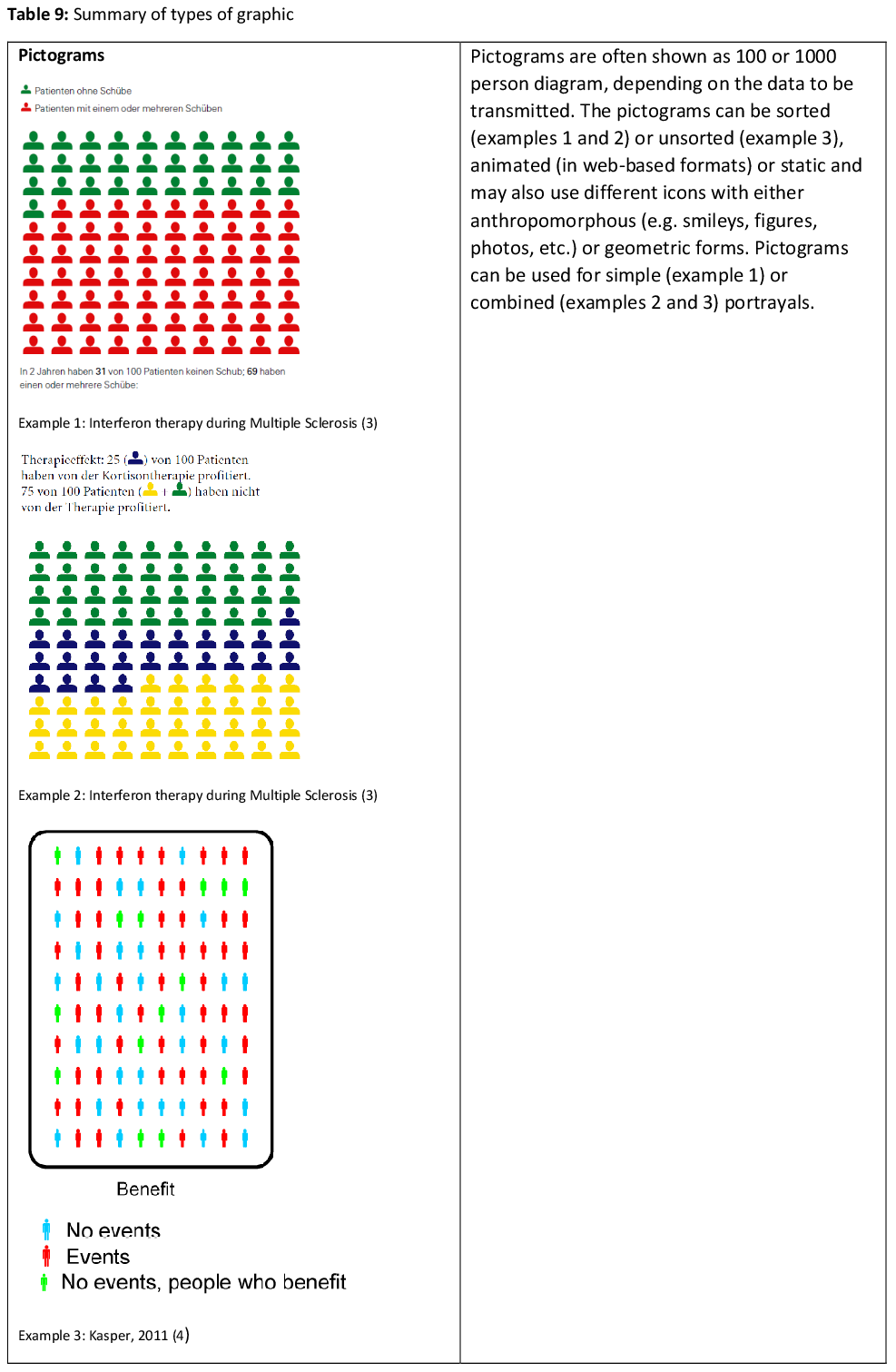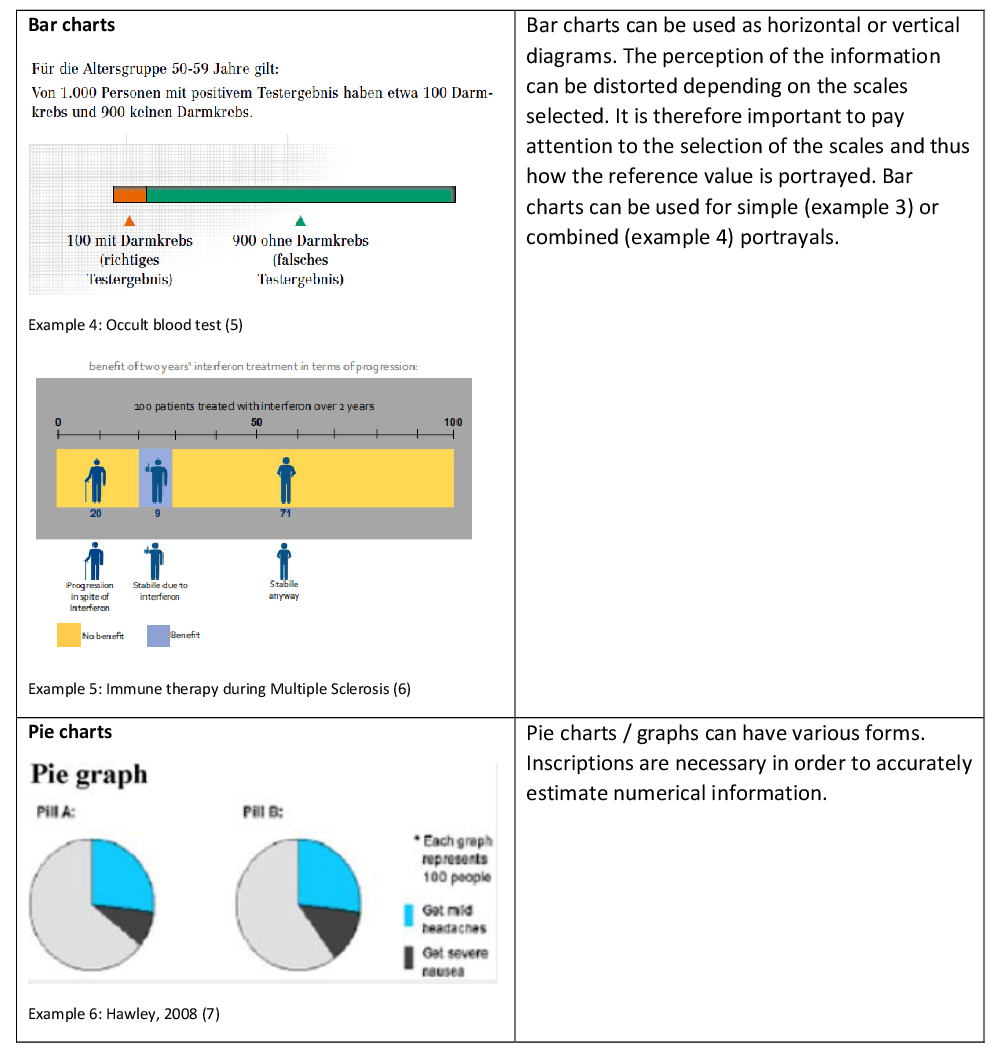Introduction
If data with a quantative statement are underlined visually, the viewer finds it easier to understand the contents. Graphic illustrations may help providing the numerical presentation with a meaningful supplement. However, graphics should be presented in a way that is easy to understand (1, 2), making a realistic assessment of risks, benefits and harm of preventive, diagnostic and therapeutic measures possible. Detailed graphics, comprehensive legends and suitable scale inscriptions enable a statement to be quickly understood (1). Nevertheless, graphics are not always interpreted in the way the data provider intends (1). Several fields of science, i.e. psychology, medicine, health sciences and market research, are investigating how the type of graphic used can lead to a better understanding of the intended statement. There are various types of graphic in use. Pictograms, bar charts and pie charts are used particularly for transmitting health information (cf. Table 9). For instance, pictograms can be deployed in many variations to provide simple, combined or animated presentations. Diagrams are portrayed mostly as bar or pie charts. The following explanations show the effects that visual enhancement of text statements can have on the reader.


